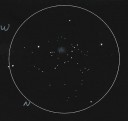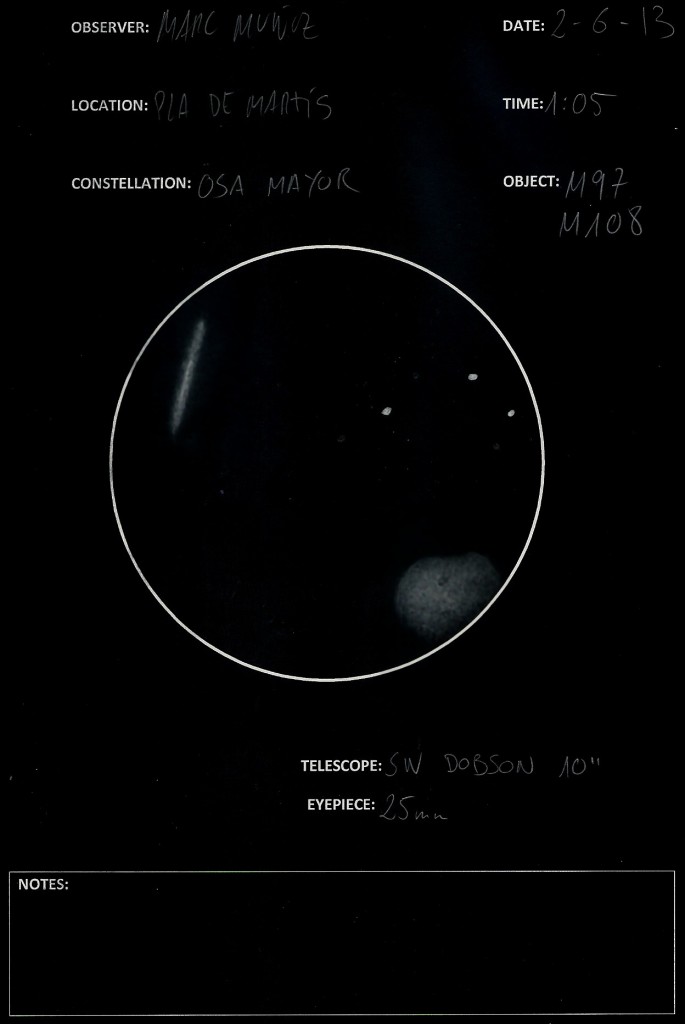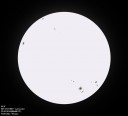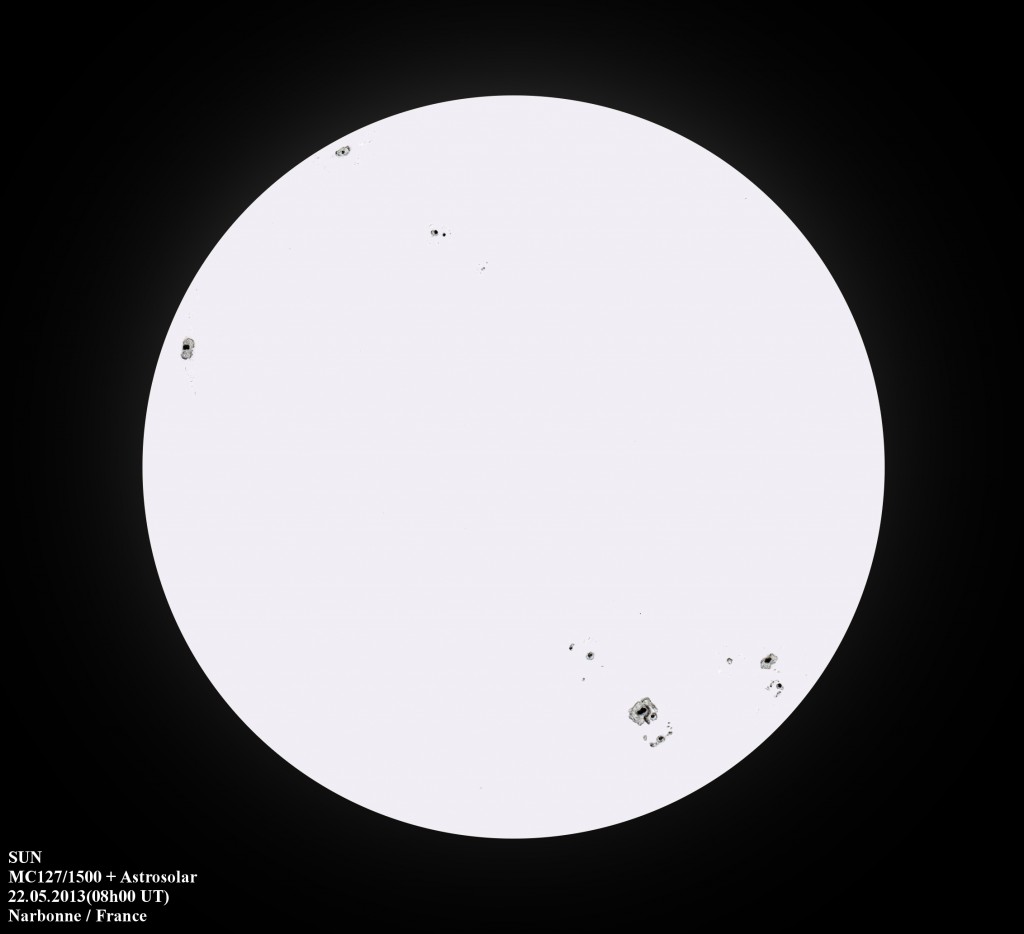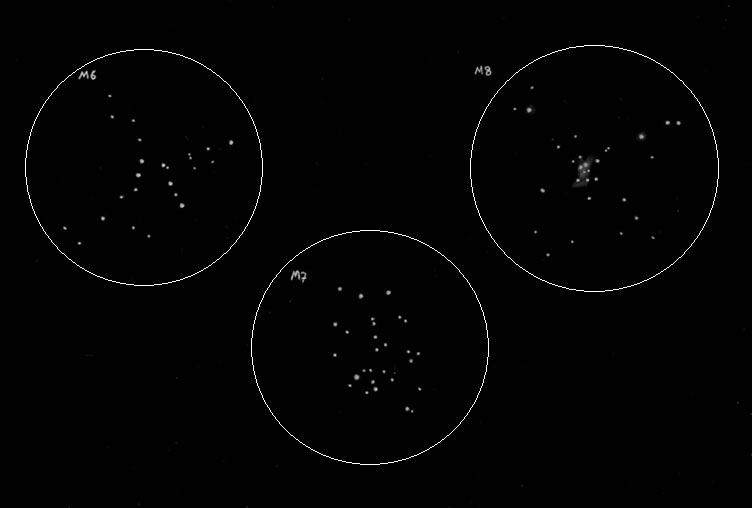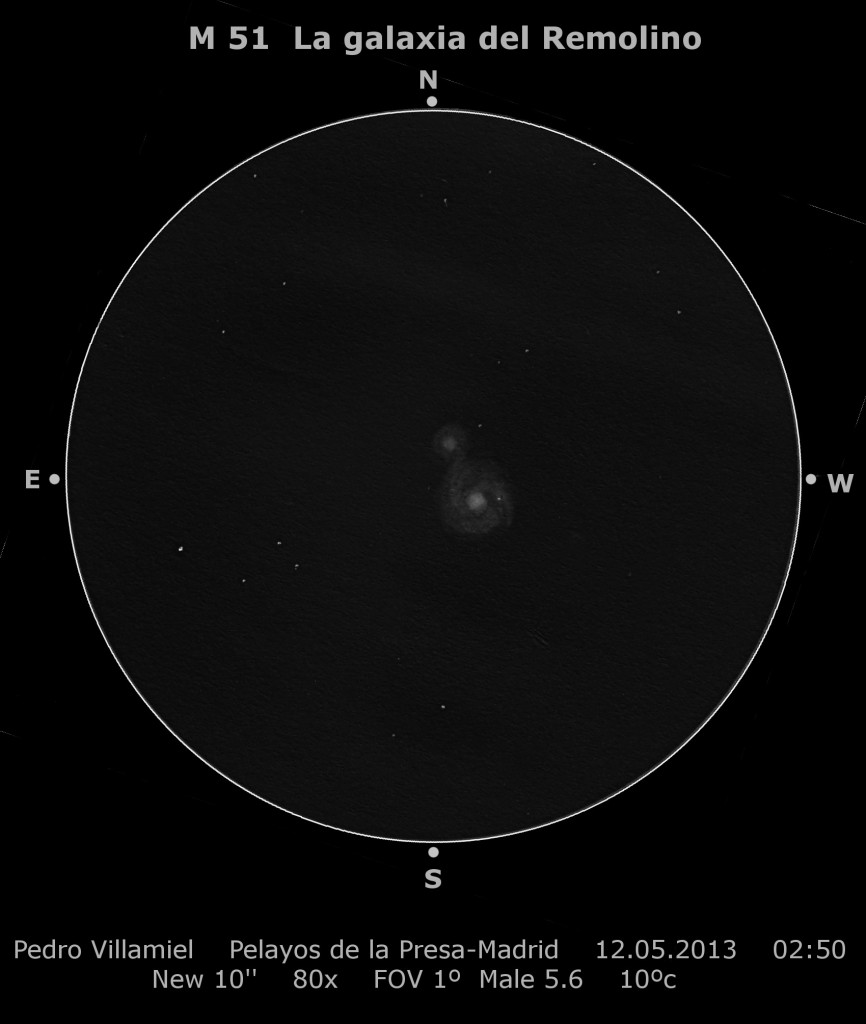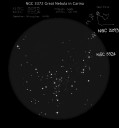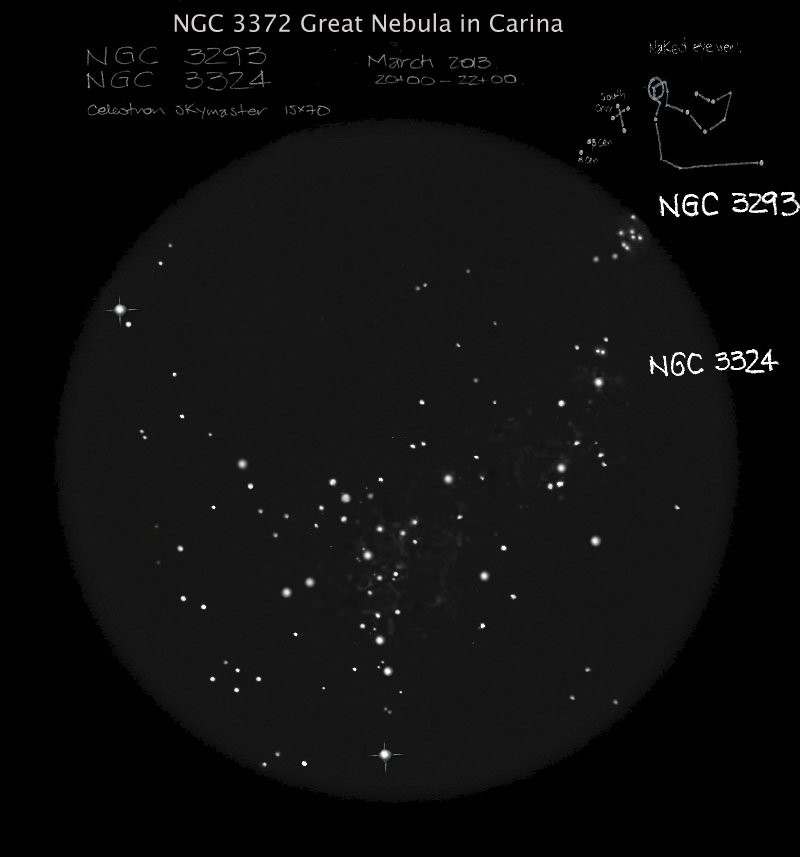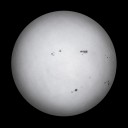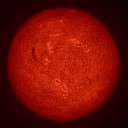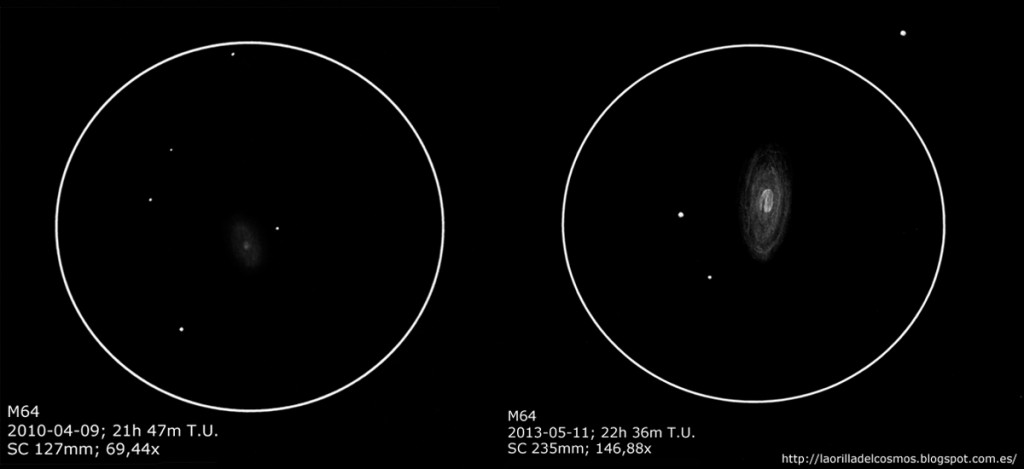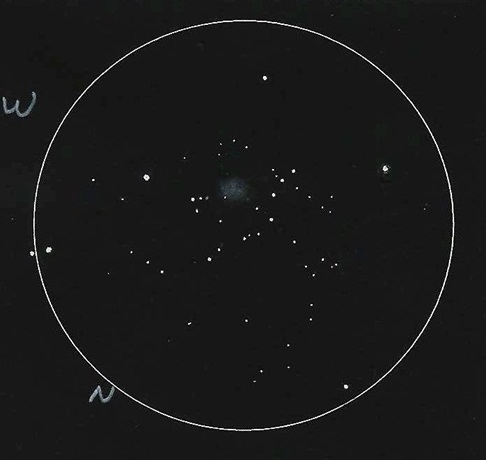
Aloha!
I submit to you my sketch of planetary nebula NGC 6818 and the beautiful open cluster of stars that frame it, NGC 2818A, in the southern constellation Pyxis. The night was exceptionally clear & still at ~10,000 foot elevation site of Haleakala.
At the eyepiece this planetary appears as a greyish, elongate & irregular ghostly object within a lovely, but dim open cluster of 10th to 14th magnitude stars. On prolonged observation this open cluster takes on the appearance of petals of a flower with the planetary somewhat offset in the central region. The planetary nebula is best seen with averted vision and a narrow pass band filter which is helpful to better define the borders.
Though NGC 2818 & its often cited as a member of this open cluster of stars, accurate measurement of their velocities suggest this is a only chance alignment. http://apod.nasa.gov/apod/ap090122.html
NGC 2818 & NGC 2818A in Pyxis
Planetary Nebula / Open Cluster
Haleakala National Park, Maui HI
5/8/13 8:45pm
12.5” Portaball
14mm ES, 109X
DMG NPB Filter
Cindy (Thia) Krach
Haleakala Amateur Astronomers
